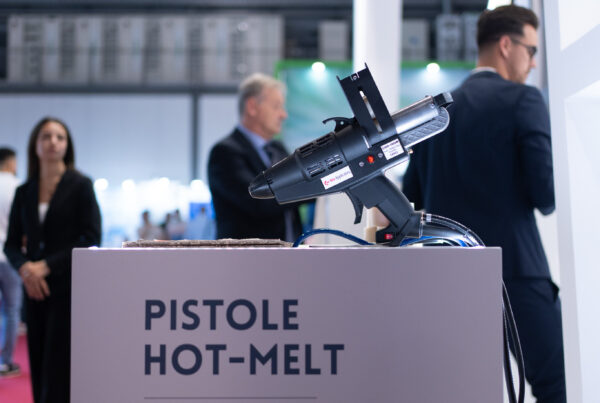Adhesives for strong electromagnetic shielding
With the increasing proliferation of wireless devices, we have realized that it is increasingly essential to deal with electromagnetic waves that radiate the same frequency spectrum and cause electromagnetic interference. Devices that emit radio frequencies require effective electromagnetic shielding to limit the propagation of their interference to nearby components and to protect the end device from performance degradation. As electronics evolve toward miniaturization, reduced weight, and higher speeds, these challenges become increasingly significant, as conventional shielding methods have functional and operational limitations.
An optimal solution we propose for interference protection is the use of an electromagnetic shielding adhesive.
What are electromagnetic shielding adhesives
Connectivity, reliability, and stringent safety regulations increase the need for high-performance EMI (electromagnetic interference) shielding solutions. Electromagnetic shielding adhesives are products designed to decrease the influence of electromagnetic fields and radiation on a device or object. Shielding uses a barrier made of conductive material whose purpose is to protect devices from electromagnetic interference and to attenuate the transmission of EMI outside the device. A very effective electromagnetic shielding adhesive, according to Mascherpa, is Dowsil™ EC-6601, This silicone adhesive for electronics can withstand many compression and tension cycles and maintain a strong conductive path, making it ideal for radar, camera and 5G base station applications.
DOWSIL™ EC-6601
DOWSIL™ EC-6601, a 2020 R&D 100 Award winning product, is one of the best electronically conductive adhesives. DOWSIL™ EC-6601 is a stable and durable electromagnetic shielding adhesive. Compared with other products, it shows stronger adhesion, more conductivity, better material strength, more flexibility and longer shelf life. In fact, this unique sticker offers:
- Strong shielding over a wide range of frequencies
- Elongation greater than 150% to allow flexibility in joints
- Strong adhesion to many substrates
- Reliable performance, with mechanical and conductive properties
- Excellent corrosion resistance




